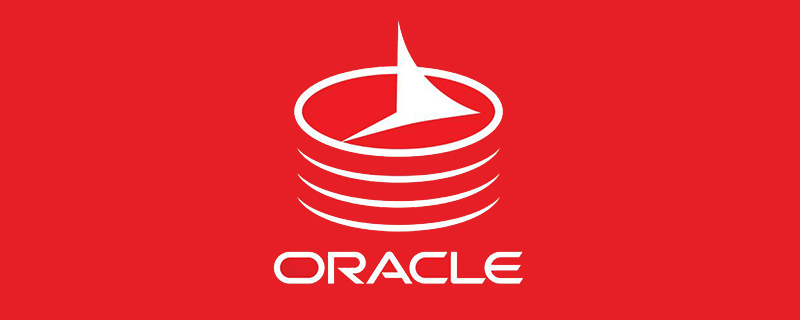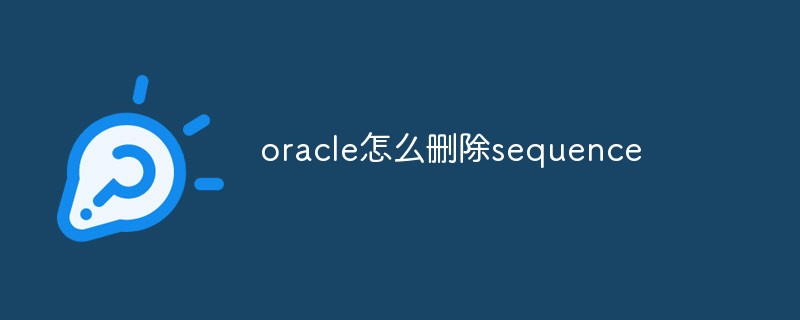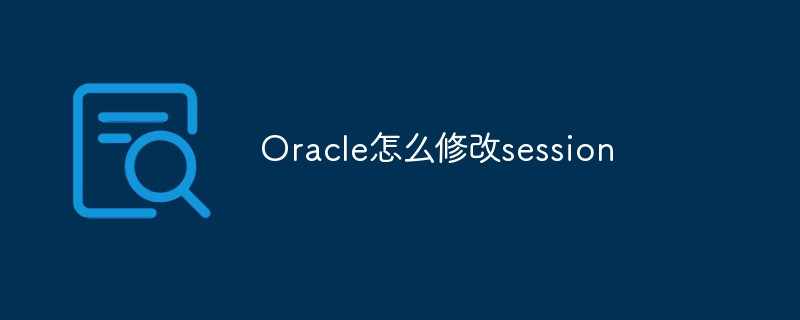Query method: 1. Use "select*from dba_roles;" to view all roles; 2. Use "select*from dba_role_privs;" or "select * from user_role_privs;" to view the roles owned by the current user .

The operating environment of this tutorial: Windows 7 system, Oracle 11g version, Dell G3 computer.
What is a role
A role. A role is a set of permissions. If a role is assigned to a user, the user will have all the permissions in the role.
Permission management is the essence of the Oracle system. Different users who log in to the same database may see different numbers of tables and have different permissions.
Oracle’s permissions are divided into system permissions and data object permissions. There are more than 100 types in total. It would be awkward to authorize users individually. Some users need the same permissions, so these users are classified into the same Class - a certain role, which simplifies and clearly authorizes operations by setting up some roles with predetermined permissions. The motivation for the emergence of roles is to simplify permission management. It is a collection of permissions.
The general approach is: the system assigns permissions to roles, and then assigns the roles to users. Of course, you can also directly assign certain permissions to users. Oracle provides fine-grained permissions. Permissions can be set individually for a certain column of the table, and where restrictions can be automatically added to a user's query of a certain table.
Oracle's roles are stored in the table dba_roles, the system permissions contained in a role are stored in dba_sys_privs, and the object permissions included are stored in dba_tab_privs.
oracle query role
1. View all roles:
select * from dba_roles;
2. View the roles owned by the current user:
select * from dba_role_privs; select * from user_role_privs;
Expand knowledge:
View the system permissions and table-level permissions of the current user
select * from user_sys_privs select * from user_tab_privs
View all tables under the user
select * from user_tables
Display user information (belonging table space)
select default_tablespace,temporary_tablespace from dba_users
Display the permissions of the current session
select * from session_privs
Display the system permissions of the specified user
select * from dba_sys_privs
Display Privileged user
select * from v$pwfile_users
recommended tutorial: "Oracle Tutorial"
The above is the detailed content of How to query roles in oracle. For more information, please follow other related articles on the PHP Chinese website!
 什么是oracle asmApr 18, 2022 pm 04:16 PM
什么是oracle asmApr 18, 2022 pm 04:16 PMoracle asm指的是“自动存储管理”,是一种卷管理器,可自动管理磁盘组并提供有效的数据冗余功能;它是做为单独的Oracle实例实施和部署。asm的优势:1、配置简单、可最大化推动数据库合并的存储资源利用;2、支持BIGFILE文件等。
 oracle怎么查询所有索引May 13, 2022 pm 05:23 PM
oracle怎么查询所有索引May 13, 2022 pm 05:23 PM方法:1、利用“select*from user_indexes where table_name=表名”语句查询表中索引;2、利用“select*from all_indexes where table_name=表名”语句查询所有索引。
 Oracle怎么查询端口号May 13, 2022 am 10:10 AM
Oracle怎么查询端口号May 13, 2022 am 10:10 AM在Oracle中,可利用lsnrctl命令查询端口号,该命令是Oracle的监听命令;在启动、关闭或重启oracle监听器之前可使用该命令检查oracle监听器的状态,语法为“lsnrctl status”,结果PORT后的内容就是端口号。
 oracle全角怎么转半角May 13, 2022 pm 03:21 PM
oracle全角怎么转半角May 13, 2022 pm 03:21 PM在oracle中,可以利用“TO_SINGLE_BYTE(String)”将全角转换为半角;“TO_SINGLE_BYTE”函数可以将参数中所有多字节字符都替换为等价的单字节字符,只有当数据库字符集同时包含多字节和单字节字符的时候有效。
 oracle怎么删除sequenceMay 13, 2022 pm 03:35 PM
oracle怎么删除sequenceMay 13, 2022 pm 03:35 PM在oracle中,可以利用“drop sequence sequence名”来删除sequence;sequence是自动增加数字序列的意思,也就是序列号,序列号自动增加不能重置,因此需要利用drop sequence语句来删除序列。
 oracle怎么查询数据类型May 13, 2022 pm 04:19 PM
oracle怎么查询数据类型May 13, 2022 pm 04:19 PM在oracle中,可以利用“select ... From all_tab_columns where table_name=upper('表名') AND owner=upper('数据库登录用户名');”语句查询数据库表的数据类型。
 oracle查询怎么不区分大小写May 10, 2022 pm 05:45 PM
oracle查询怎么不区分大小写May 10, 2022 pm 05:45 PM方法:1、利用“LOWER(字段值)”将字段转为小写,或者利用“UPPER(字段值)”将字段转为大写;2、利用“REGEXP_LIKE(字符串,正则表达式,'i')”,当参数设置为“i”时,说明进行匹配不区分大小写。
 Oracle怎么修改sessionMay 13, 2022 pm 05:06 PM
Oracle怎么修改sessionMay 13, 2022 pm 05:06 PM方法:1、利用“alter system set sessions=修改后的数值 scope=spfile”语句修改session参数;2、修改参数之后利用“shutdown immediate – startup”语句重启服务器即可生效。


Hot AI Tools

Undresser.AI Undress
AI-powered app for creating realistic nude photos

AI Clothes Remover
Online AI tool for removing clothes from photos.

Undress AI Tool
Undress images for free

Clothoff.io
AI clothes remover

AI Hentai Generator
Generate AI Hentai for free.

Hot Article

Hot Tools

Safe Exam Browser
Safe Exam Browser is a secure browser environment for taking online exams securely. This software turns any computer into a secure workstation. It controls access to any utility and prevents students from using unauthorized resources.

SublimeText3 Linux new version
SublimeText3 Linux latest version

SublimeText3 Chinese version
Chinese version, very easy to use

Notepad++7.3.1
Easy-to-use and free code editor

SublimeText3 Mac version
God-level code editing software (SublimeText3)






